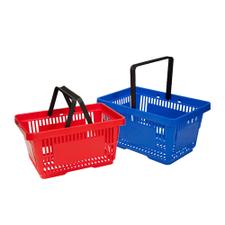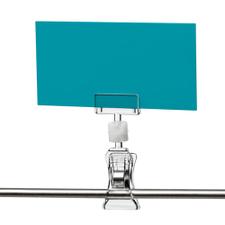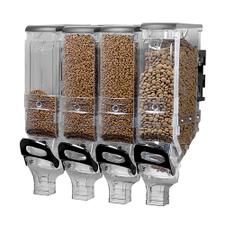Injection Moulding
Injection moulding is a moulding process where thermoplastic, or other moulding compound material, is injected into a moulding tool using an injection moulding machine. The cavity of the tool determines the shape and surface structure of the finished product.
Products can be manufactured from a few tenths of a gram to the two-digit kilogram range. These products include clips, poster frames, brochure holders, or shopping baskets. Overall, injection moulding is a very efficient and versatile manufacturing process, with consistent high-quality results.

Injection Moulding Process
1. Clamping of the mould havles by the hydraulic or mechanical force.
2. Injection: plastic pellets are melted and the melted plastic flows through a nozzle into the mould cavity. The cavity is then filled with the molten plastic material.
3. Cooling of the molten plastic until it solidifies within the mould cavity.
4. Ejection of the finished part from the mould, once the mould opens.
In-Mould Labelling
Some products go through an extra step within the injection moulding process called in-mould labelling. In the in-mould process, substrates such as paper, fabric, printed or structure foils are place in the injection mould and are back-injected. In this way, sophisticated surfaces are created in a single step. This process is often an alternative to printing.
Tool Production
We have many years experience in this field, having over 300 different tools available. This allows us to manufacture a range of products such as poster frames, leaflet dispensers and clips. In machinery with a locking pressure between 250 to 4200 kN, we process thermoplastics using single or multi component moulding to create parts of up to 1936 g.
An injection moulding tool is created from several individual parts, mainly in steel, which allow large numbers of plastic parts to be manufactured.
A single tool allows several parts to be made simultaneously. The ability to build tools in our own workshop means shorter delivery times with no loss in quality.
To further reduce delivery time for prototypes and pre-production samples, it is also possible to make a temporary tool from aluminium.

High Efficiency
Consistency
Versatility
Cost Effective
Advantages of Injection Moulding
- High efficiency
- Consistency
- Versatile
- Cost effective
Injection moulding is a manufacturing process that can be used to produce large quantities of product in a short amount of time. It is also produced in a cost effective manner.
This large production of materials is produced in not only a time efficient manner, but in a consistent, high-quality, and dimensional accuracy.
Injection moulding is also very versatile, being able to produce an endless amount of shapes and sizes form different shaped moulds. It is also able to use a wide variety of thermoplatics with different properties and characteristics.






